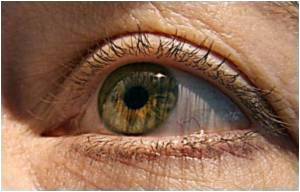New research has shown that human eyes evolved to witness a world with more darkness than light.

And the closer clustering of OFF cells as compared to that of ON cells allocates more neural processing to dark regions of an image.
Dr Charles Ratcliff from the University of Pennsylvania and colleagues reasoned this imbalance of cells might reflect what we see in the world around us.
To test their hypothesis, they measured the statistical distribution of light and dark areas in a number of images. They found most contain more dark contrasts than light, regardless of the spatial scale used.
Ratcliff and colleagues then constructed artificial images that matched the statistical characteristics of natural ones and computed the optimal configuration of OFF and ON cells for visual processing.
They found the best configuration of cells contained densely clustered regions of OFF cells, similar to the layout found in the human retina.
Advertisement
Their findings appear this week in the Proceedings of the National Academy of Sciences.
Advertisement











